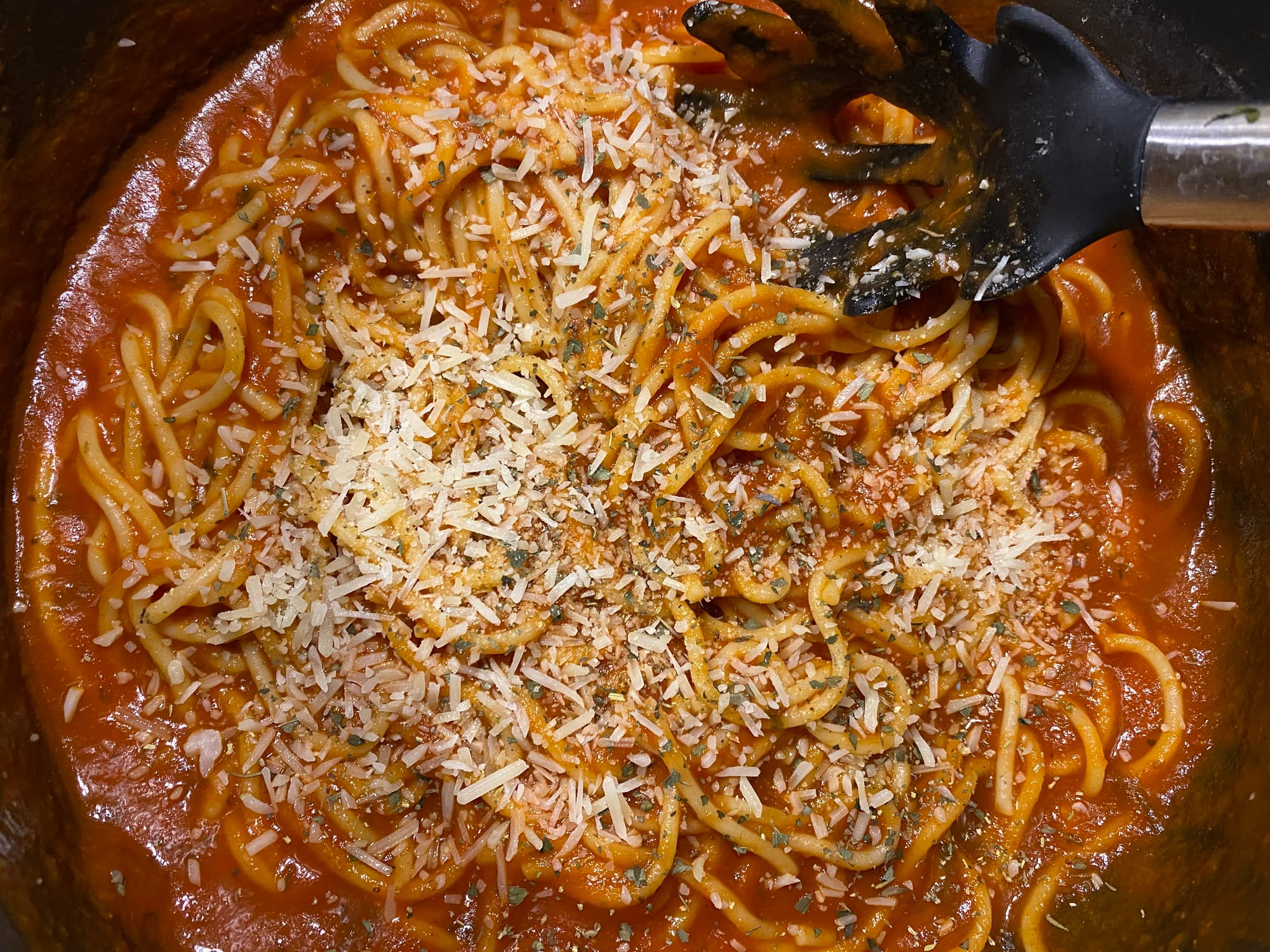Understanding Picky Eating, Part 2: Sensory Sensitivities

Welcome back to my (currently) 3-part series on understanding picky eating! You can catch up on Part 1: You Can't "Fix" Picky Eating here.
In this part I move on to talking about the sensory issues that lead to, contribute to, or cause problems with picky eating. In part 3, I'll discuss the issue of comfort-levels and trust with eating.
Picky Eating is a Sensory Issue
First and foremost, food consumption is an input and output process. We take in food, break it down, and poop it out. Our bodies (and brains) become highly-sensitive to how food (and other substances) affect our bodies both as they’re coming in and as they’re going out.
Eating is a full sensory experience.
We hear the sizzle of a cooked food, the crinkle of a wrapper, the crunch of a crispy bit. We smell the aroma, the seasoning, the sauce, the grease, even the pasta water. We see the food and all of its colors, shapes, variances, and cues into its texture. We feel the texture, the doneness, the dryness or wetness, how much chewing power it takes. We taste every ingredient, flavor, combination, reaction in our mouth, or blandness in more boring foods.
We feel how the food feels as we swallow it, as it sits in our stomaches and we digest it.
Then, these things also apply coming out the other end. The connection is less direct and obvious, but we also build up reactions to different foods based on how they might impact us as they leave our body. Those senses matter, too. Anyone who has had food poisoning knows it’s easy to just never want the food that caused it again.

Picky eaters tend to me more sensitive to these inputs, or at least some of them. Some might have a low smell tolerance, some might have taste-specific concerns, others might have internal alarms go off based on all the different senses.
Picky eating does not require higher sensitivity, however. More sensitive people are more prone to picky eating because the input signals feel stronger, but some sensitive individuals dive in on that and love that added feeling. And plenty more have internal red flags thrown by specific sensations, even if they’re not necessarily felt any more strongly than anyone else.
Food is an input, across all the senses. If someone’s sense of smell or taste says that a food might potentially be distressing – that’s valid. That’s okay. This doesn’t need fixed. They might be able to get more comfortable with it in time, but forcing them to eat it will only reinforce that association of distress with the food.

For some, specific kinds of smells or tastes, or textures can be off-putting – and no amount of reassurances that the individual “will like” the food or that “it’s not that bad” make it feel safe.
For me, personally, the sensory issue really rears its head with smells and temperature contrasts. I explored much of this in Sauces Are Overwhelming; anything with vinegar as a primary ingredient, or other sharp flavors quickly become an instant turn-off, even if I like the sauce mixed into other food. I can enjoy some sauces more if they’re warmed up a bit, but they’re virtually never served that way in restaurant food.

Another situation where smell becomes a deal breaker is with certain foreign foods that I’ve not had exposure to.
Quite a few years ago, I spent a weekend working with a fellow YouTuber on some projects. We grabbed lunch at nearby places each day and he made an effort to introduce me to different restaurants around his place of work whenever I visited. One day he wanted to grab Indian food. I have very minimal experience with Indian food – but I didn’t want to be a killjoy and he was being very low-pressure about it, so I wanted to be brave. It was a buffet, surely I’d find something I could eat.
From the moment we walked in the door, the smells of the place were completely overwhelming. I’ll save my descriptors of how I thought the place smelled for the sake of not insulting anyone (or any culture’s food) based on this one experience, but all I wanted to do was run out of there.
As we went through the buffet, not a single thing looked edible to me. I could recognize that it was indeed food, but nothing I wanted any closer to me than it had to be. I grabbed a single piece of naan and nibbled on it while the other guy ate. I was miserable.
He felt really bad and wound up also stopping at a sub joint so I could grab a sandwich and eat before we went back to work – but that was a very embarrassing experience. He wasn’t bothered by it at all, and was never rude or judgey, but internally it just felt infantilizing.
If picky eating was a choice, if it was something I could “just” change, that would be one such moment (of many) that I would have done so. Alas, it did not magically change.
Also, when considering the previously-mentioned “inconvenience” element – these kinds of experiences rarely happen. At most restaurants I usually can find something I will eat and be content. Rarely am I just all-out miserable as I was at the Indian place – but even if those experiences do happen, it isn’t that big of a deal to just split and get food from different places, then meet back up or find somewhere to eat together. I may have been embarrassed, but my colleague did not actually see it as a problem.

The important thing is to not let the embarrassment and pressure rule you, and to instead use these experiences to build a stronger understanding of your pickyness. Often, there are strong commonalities between things that provoke a strong reaction in you – those commonalities can then be used to inform what kinds of sensory inputs cause you trouble.
For example, Indian food tends to have a strong scent from heavy use of aromatics like garlic and onion, volatile cooking oils, and asafetida – a spice with a similar, pungent aroma to garlic – cooked at high temperatures, which strengthen smells. While I’m definitely used to garlic and onions, I’m used to it either fresh or cooked in a way to produce mellow, smooth results rather than pungent.
Correlations between other sensory preferences and food can also be found – especially in children. Sometimes kids who prefer playing rough and pressure on their body prefer crunchy, strongly-flavored foods while someone who might prefer more gentle play or doesn’t like loud noises might prefer bland food or soft food that doesn’t give as much sensory input. This can be more difficult to identify as an adult, but can still be used to help understand where these food preferences come from.

One thing that is often missed is the ability for one sense to override others. For myself, smell dominates all. If something smells like feet, like vinegar, like something gross – no amount of insisting to me that it’s actually delicious will change that. Even trying to put it in my mouth will lead to me gagging. Smell beats everything.
This has tangibly prevented me from enjoying meals that I even created myself. I recently tried my hand at lomo saltado (Peruvian fajitas, basically using steak instead of chicken, and french fries at the bottom, with soy sauce rather than Tex Mex seasoning) and, following the recipe I was using, the moment I added ¼ cup of white distilled vinegar, my entire kitchen smelled like vinegar. The meal was effectively ruined for me. It took significant work on my part to muster up the ability to still try it anyway, and still being able to smell the vinegar meant that was the only flavor I could focus on. I nibbled on the steak pieces (sat on top, so didn’t have as much vinegar in it) but didn’t really eat it. Even later when the vinegar smell had died down, the association was made and I was just… uninterested. This was something I was super excited to make, but I just couldn’t do it. (Added a new “house rule” to my cooking notebook that I should always start with half the amount of vinegar recommended by a recipe, or less.)
Smell can heavily influence taste, outright. Another silly example comes when brushing my teeth. For as long as I can remember, I have only used the Crest Cinnamon Expressions toothpaste. Mint is a flavor that is just too offensive to me, and thus I try to avoid it. (As an adult, I could probably use traditionally-flavored toothpaste and be fine, but that doesn’t mean I’d like it.) It doesn’t really taste like cinnamon, but it’s close enough that it’s stuck with me since childhood. My kiddo, however, currently uses a bubblegum-flavored kid’s toothpaste. If we brush teeth at the same time, when he starts spitting some out into the sink the strong bubblegum (almost fruity) smell will take over my senses and actually confuse my tastebuds and completely mask the flavor of my own toothpaste. It’s like I taste the smell.
Again, obviously not everyone will experience things in the same way, or experience these kinds of things at all – but it’s quite interesting to see how every little element can play a big role here.

Another sensory input that could trip someone up is just consistency. Many picky eaters prefer heavily processed, often pre-made or pre-packaged, meals because the flavors are consistent. Every time you eat a processed food thing, it usually tastes and feels exactly the same as it did the last time. Meanwhile a meal made from scratch, or even fresh produce will have variances in ripeness, flavor, texture, etc. These variances can cause discomfort and lead to avoiding the food, even if the picky eater likes the food overall.
Thanks for reading! I see a lot of discussions about sensory inputs and picky eating that seem to think it's only a "real problem" if it's with a kid and if that kid goes into total meltdown mode. There's not enough resources out there for the adult picky eaters among us!
In part 3, I wrap-up this discussion with the all-too-overlooked comfort and trust component to picky eating.